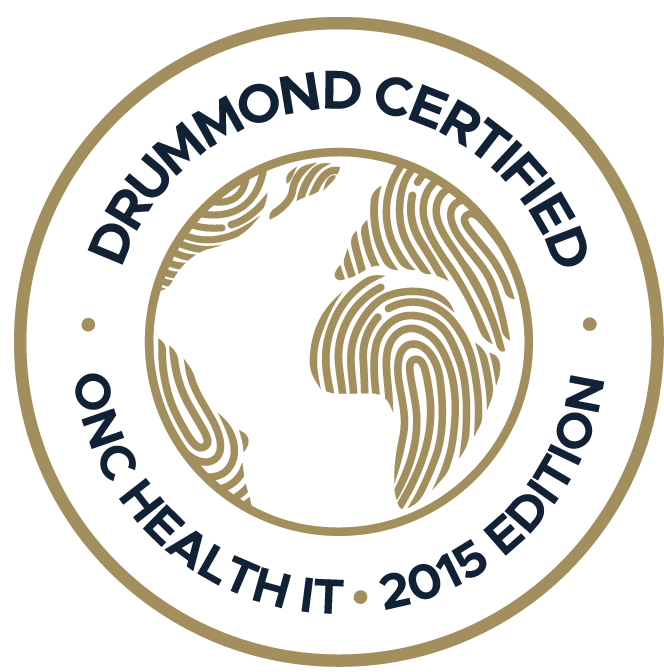Operating a family medicine practice is all about doing multiple tasks—from managing patient records to coordinating care for diverse families—at the same time. Just imagine a dedicated family health practitioner who...
Orthopedic practitioners are increasingly relying on EHR systems to streamline their operations. With a suitable Orthopedics EHR, tasks like medical billing become much more straightforward, leading to better management and revenue. For orthopedic practices searching for practical ways to increase their financial gain without adding complexity, the solution lies in choosing and using the best EHR effectively. Orthopedics can significantly boost their practice's revenue by integrating smart billing and coding practices facilitated by these specialized electronic health records software.
In this article, we will uncover several tips that leverage the capabilities of a specialized Orthopedics EHR to improve billing efficiency and coding accuracy, ultimately maximizing your practice’s financial performance.

Essential Billing Tips Using Orthopedics EHR
- Automating Billing Reminders
Use your Orthopedics EHR to set up automated reminders for billing deadlines to ensure your practice gets paid promptly. These reminders can alert your staff to follow up on unpaid accounts, submit claims before they are past due, and reconcile accounts receivable with greater efficiency.
- Managing Patient Billing Information Efficiently
With an EHR system, all your patients' billing details are stored in one place. Use these details effectively to manage and update billing information promptly. This will help faster claim submissions and reduce delays caused by incorrect or incomplete patient data.
- Accurate Patient Data Entry
Accurate data entry is critical for successful billing. Ensure that the patient demographics, insurance details, and visit information are entered correctly into the system. This reduces the chance of claim rejections and helps maintain a steady revenue cycle.
Enhancing Coding Accuracy with Orthopedics EHR
- Utilizing Built-in Coding Resources
Orthopedics EHR systems often come with built-in coding tools, such as ICD-10 lookup and CPT code suggestions. These resources can guide your coding process, helping you to choose the most appropriate codes for the services provided, reducing the likelihood of coding errors.
- Staying Updated with Coding Standards
Medical coding standards are continuously evolving. Use your EHR system to stay up-to-date with the latest changes. The system’s updates can serve as a reference point for your staff to ensure that the coding for all procedures is current and compliant.
- Identifying Common Coding Errors
Analyze your EHR’s reporting tools to track and identify patterns in coding errors. Understanding these patterns allows you to preemptively correct discrepancies and conduct targeted training with your staff to prevent future mistakes.
Streamlining Claim Submissions with EHR
- Automating Claims Submission Process
One significant advantage of an Orthopedics EHR is its ability to automate the claims submission process. Set up your EHR to send claims electronically and receive confirmation of receipt. Automation reduces the manual workload and expedites reimbursements.
- Managing Claim Denials Efficiently
Use your EHR system to track the status of claims and quickly address denials. Having all the necessary information within the EHR allows for swift correction and resubmission, improving the chance of claim acceptance upon re-evaluation.
- Reducing Manual Errors with Integrated Workflows
Integrated EHR workflows that align with billing tasks help reduce manual errors. This integration ensures that billing and coding inputs are consistent throughout the patient’s record, from registration to final billing, creating a smoother path to revenue generation.
Maximizing Revenue Through EHR-Enabled Reporting
- Generating Detailed Financial Reports
Your Orthopedics EHR can be a goldmine of data for financial reporting. Use it to generate detailed billing, collections, and outstanding accounts reports. Analyzing these reports can help identify bottlenecks in your revenue flow and opportunities for improvement.
- Analyzing Billing Patterns
Keep track of billing patterns through your EHR. This insight can help you understand peak times for specific procedures and the associated reimbursements. By doing so, you might adjust scheduling or staffing to align better with these patterns, ensuring maximum billing efficiency.
- Revising Fee Schedules Based on Insights
Based on the financial reports and pattern analysis, consider revising your fee schedules if necessary. Accurate data from your EHR system can support negotiations with insurance companies, ensuring that your fees reflect the quality and cost of the orthopedic services.
Practical Tips for Training Staff in EHR Billing and Coding
- Developing EHR Billing Training Programs
Invest in creating comprehensive training programs that address billing specifics within your EHR. Well-trained staff make errors infrequently and are more efficient in managing the billing cycle, directly impacting your revenue.
- Promoting Continuous Learning and Certifications
Encourage your billing and coding team to learn and earn certifications continuously. Having certified coders who are well-versed in the latest practices will enhance accuracy and streamline billing processes.
- Sharing Best Practices
Create a collaborative environment where staff can share tips and best practices for billing using the EHR system. This peer-to-peer learning can help identify quick fixes to common issues and foster a team-oriented approach to revenue maximization.
Staying Compliant with Billing and Coding Regulations
- Using EHR for Regulatory Changes
Use the compliance features of your Orthopedics EHR to stay up-to-date with billing and coding regulations. The system can alert you to significant changes that might affect your billing practices, keeping you compliant with the latest healthcare laws.
- Integrating Compliance Checks
Tailor your EHR to perform routine compliance checks during the billing and coding process. This proactive approach can avoid costly mistakes and penalties associated with non-compliance.
- Ensuring HIPAA Compliance in Transactions
Ensure that all your billing transactions adhere to HIPAA regulations. Your EHR should have robust security measures to protect patient data, ensuring privacy during the electronic data transmission.

Practice EHR Orthopedics EHR - The One EHR to Maximize Revenues
To enhance revenue and operational efficiency in orthopedic practices, leveraging the specialized features of Practice EHR's Orthopedics EHR module is vital. This system is designed to cater to the unique needs of orthopedic practices, offering tools for automating billing reminders, managing patient billing information efficiently, and ensuring accurate patient data entry. Built-in coding resources and up-to-date coding standards help minimize coding errors and streamline the claims submission process.
Practice EHR's Orthopedics module also enables practices to efficiently manage claim denials and reduce manual errors through integrated workflows, smoothing revenue generation paths. The system's robust reporting capabilities offer valuable insights for financial optimization, while its user-friendly interface facilitates staff training on billing and coding. By fully utilizing Practice EHR's Orthopedics module, practices can significantly improve their billing efficiency and coding accuracy, ultimately maximizing revenue and enhancing patient care.
Conclusion
Maximizing revenue in an orthopedic practice isn’t just about seeing more patients – it’s about using the right tools to enhance the efficiency and accuracy of billing and coding operations.
By utilizing an Orthopedics EHR effectively, practitioners can ensure smoother operations, fewer denied claims, and a healthier bottom line. Get the most reliable Orthopedics EHR by Scheduling A Free Demo today!
Topics: EHR Solution, Specialty-Specific EHR, Urgent Care, Medical billing services, EHR, Technology in Healthcare, EHR Features, Orthopedics EHR
RECENT POSTS



TOPICS
- EHR Solution (148)
- EHR (85)
- Patient Care (78)
- digital age (78)
- Medical Billing (73)
- Specialty-Specific EHR (71)
- Integrated EHR (59)
- Small Practice (56)
- Technology in Healthcare (56)
- Industry Update (51)
- New Technology (47)
- Medical billing services (46)
- EHR Features (43)
- RCM (43)
- Cloud-based EHR (39)
- Practice EHR News (39)
- Healthcare Office Management (37)
- Kiosk (28)
- HIPAA Security (21)
- ePrescribing (21)
- Telemedicine (15)
- EMR (12)
- Revenue Cycle Management (12)
- Practice Management Software (11)
- Client Favorites (10)
- Practice Automation (10)
- The ONE (10)
- Urgent Care (8)
- MACRA/MIPS (7)
- Patient Portal (7)
- Switching to New EHR (6)
- events (6)
- E-Prescribing (5)
- Product Updates (5)
- TeleVisit (5)
- AI Solutions (4)
- Insider (4)
- Internal Medicine EHR (4)
- MIPS (4)
- Podiatry (4)
- Podiatry EHR (4)
- AI Scribing (3)
- HIPAA (3)
- MIPS Reporting (3)
- Regulatory Updates (3)
- AI scanning (2)
- Billing for Private Practices (2)
- Clearinghouse (2)
- Dermatology EHR (2)
- EHR Scheduling (2)
- Family Medicine EHR (2)
- Foot and Ankle Care (2)
- Foot and Ankle EHR (2)
- Health records 101 (2)
- Integrated Practice Management (2)
- Medical Credentialing (2)
- Medical Practice Management Software (2)
- Orthopedics EHR (2)
- Patient Check-in Kiosk (2)
- Psychiatry EHR (2)
- Quality of Patient Care (2)
- Reporting Under MIPS (2)
- Risk and Liability in Medical Settings (2)
- Telehealth Platform (2)
- Telehealth Platforms (2)
- What Works Clearinghouse (2)
- AI-powered Medical Billing (1)
- Bariatric EHR (1)
- Behavioral Health Practices (1)
- Billing Communication (1)
- Cardiology EHR (1)
- Cash Flow (1)
- Chiropractic EHR (1)
- Data Security (1)
- Dos and Don'ts (1)
- EHR Guides (1)
- EHR KPIs (1)
- EHR Questions to Ask (1)
- EHR for Chiropractors (1)
- EHR for Chronic Illness (1)
- EMR vs EHR Difference (1)
- ENT EHR (1)
- Eligibility Verification in Medical Billing (1)
- Endocrinology EHR (1)
- Family Medicine (1)
- Gastroenterology (1)
- Gastroenterology EHR (1)
- General Surgery EHR (1)
- Geriatrics EHR (1)
- Guides (1)
- Healthcare Compliance Certification (1)
- Healthcare Practice Office Management (1)
- Help Center Videos (1)
- Insurance Reimbursement (1)
- KPI (1)
- Key Performance Indicators (1)
- Lab Processing (1)
- MACRA (1)
- Medical Billing Partner (1)
- Medical Coding Services (1)
- Mobile EHR (1)
- Nephrology EHR (1)
- Neurology EHR (1)
- Pain Management EHR (1)
- Pediatrics EHR (1)
- Physical Therapy EHR (1)
- Practice Cash Flow (1)
- PracticeEHR GO App (1)
- Pulmonology EHR (1)
- Simplify Practice Management (1)
- Staffing in Healthcare (1)
- Switch Medical Billing Providers (1)
- Urgent Care Medical Billing (1)
- Urology EHR (1)
- insurance claim denials (1)







